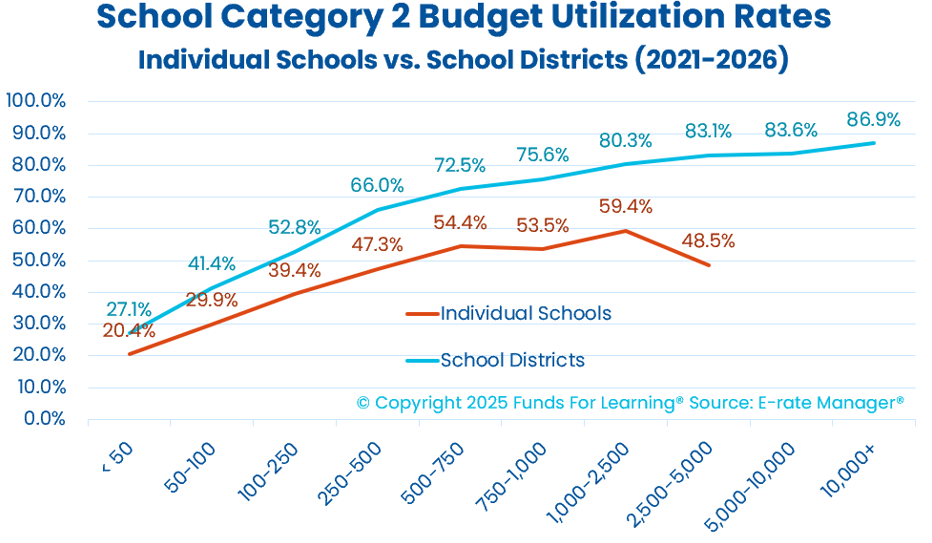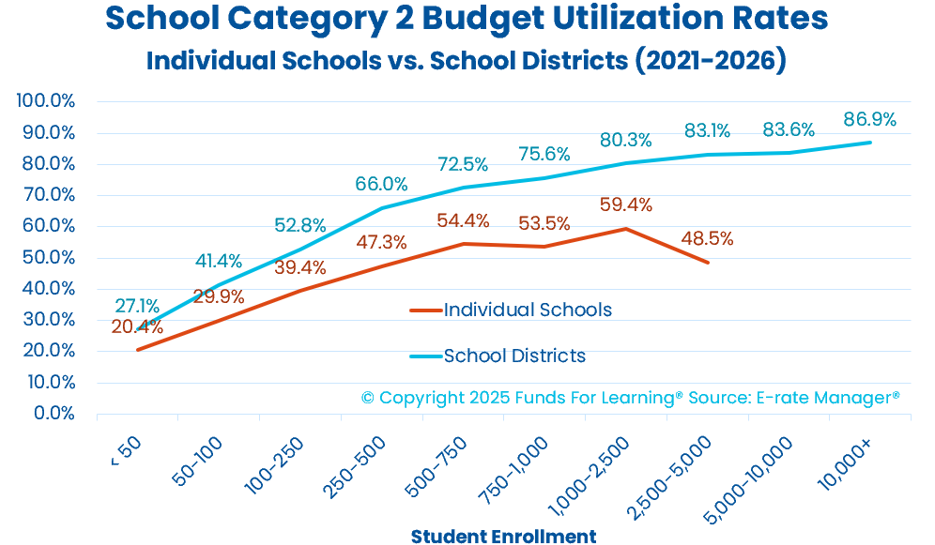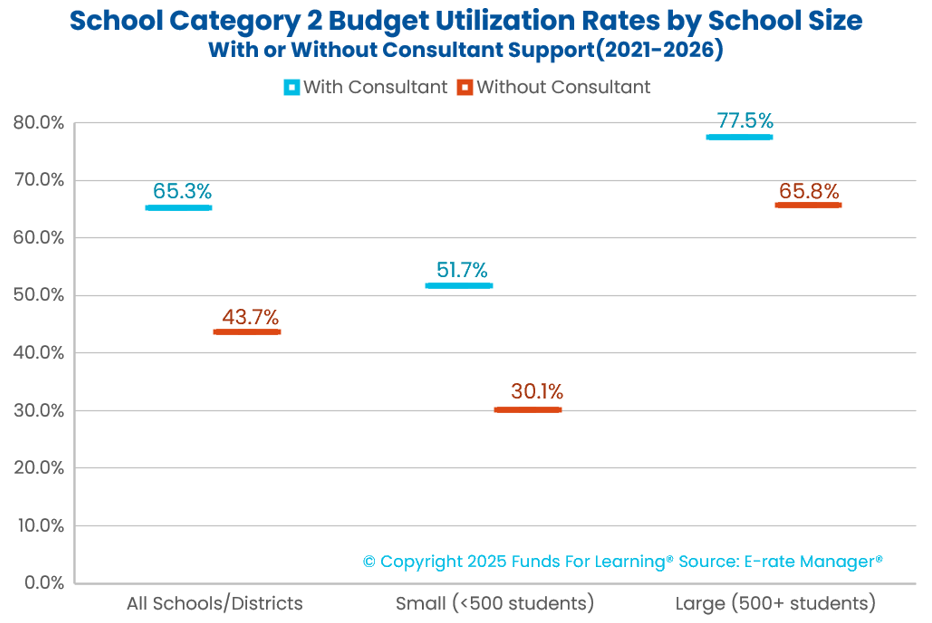The E-rate program was designed to ensure every student in every school—regardless of size or geography—has access to reliable internet infrastructure. But as our recent analysis of Category 2 (C2) budget usage from the 2021–2025 funding cycle reveals, that goal remains unevenly achieved.
Through a nationwide review of 26,000+ schools and districts, we found significant variations in how fully different institutions have been able to utilize their E-rate C2 budgets. The results offer insight into the challenges schools face—and point to practical ways to improve access and equity moving forward.
Bigger Schools, Bigger Results
One of the clearest trends? School size matters.
- Very small schools (under 100 students) used just 22% of their C2 budgets.
- Very large districts (5,000+ students) exceeded 83% utilization.

This progressive curve suggests that larger institutions—often with more administrative capacity and experience—are better positioned to take full advantage of their available funds. For smaller schools, the burden of navigating the application process and implementing projects may be more difficult to manage.
Districts Outperform Individual Schools
Organizational structure also plays a role. School districts consistently outperformed individual schools:
- Districts averaged 73% utilization
- Individual schools averaged 42%

Notably, the gap in performance becomes even more pronounced at higher enrollment levels. This may reflect differences in staffing, central support systems, or institutional knowledge related to E-rate compliance and planning.
Utilization Varies Widely by State
Some states are excelling in helping their schools fully access their C2 budgets, while others are falling behind.

- States like Mississippi (97%), Kentucky, and Georgia lead the pack.
- Others, such as Montana (38%) and Utah, show much lower utilization rates.
The disparity suggests that state-level policies, support systems, and localized expertise may have an outsized influence on whether schools can successfully navigate the E-rate process.
Specialized Support Makes a Difference
One additional trend worth noting: schools and districts that engaged outside E-rate support—such as consulting services—reported higher average utilization rates.

While many factors could contribute to this outcome, the data indicates that institutions receiving external assistance tend to make fuller use of their budgets. This is especially true for smaller schools, which may face steeper learning curves or capacity constraints when applying for and implementing funding.
Recommendations: Making E-rate Work for All
The insights from this analysis point to several key opportunities for improving E-rate access and equity:
1. Provide Targeted Support for Smaller Institutions
Simplify application processes for schools with fewer than 500 students and develop training materials tailored to their unique needs.
2. Facilitate Access to Expertise
Help schools understand the value of informed guidance—whether through internal capacity-building or shared regional resources.
3. Foster State-Level Collaboration
Encourage knowledge-sharing between high- and low-performing states. Supporting underutilizing regions with best practices and administrative tools could significantly raise the national average.
4. Support Individual Schools More Directly
Offer tools, templates, and communities of practice that help standalone schools succeed, particularly when they lack access to centralized district support.
Conclusion: A Call for Equitable Access
E-rate C2 funding is a powerful tool to close the digital divide—but only if schools can access and apply the support effectively. This analysis shows that institutional size, structure, location, and access to support resources are all correlated with higher (or lower) utilization rates.
By focusing on practical interventions—especially for smaller and individual schools—we can help ensure that E-rate funding fulfills its promise for all students, no matter their ZIP code.

